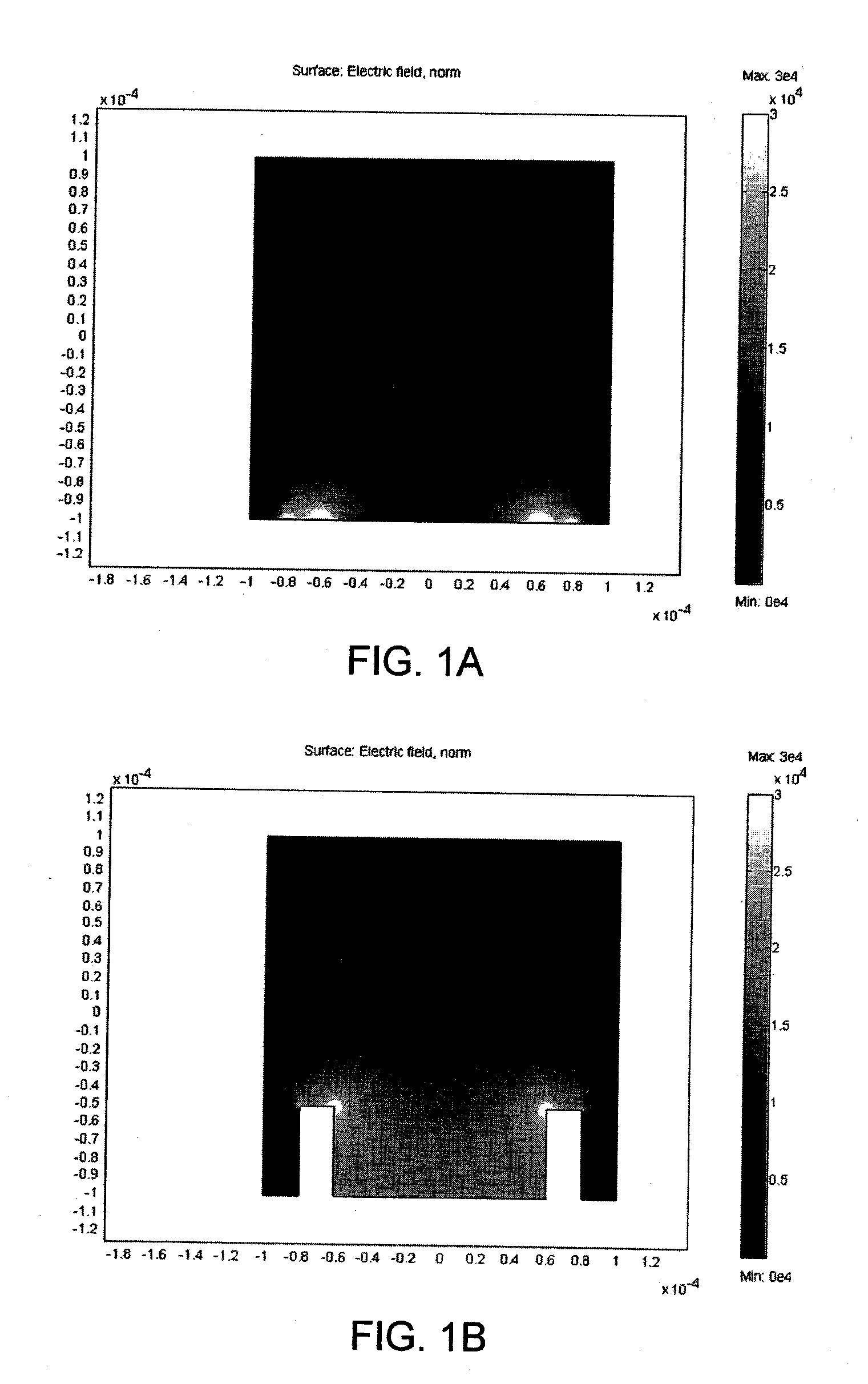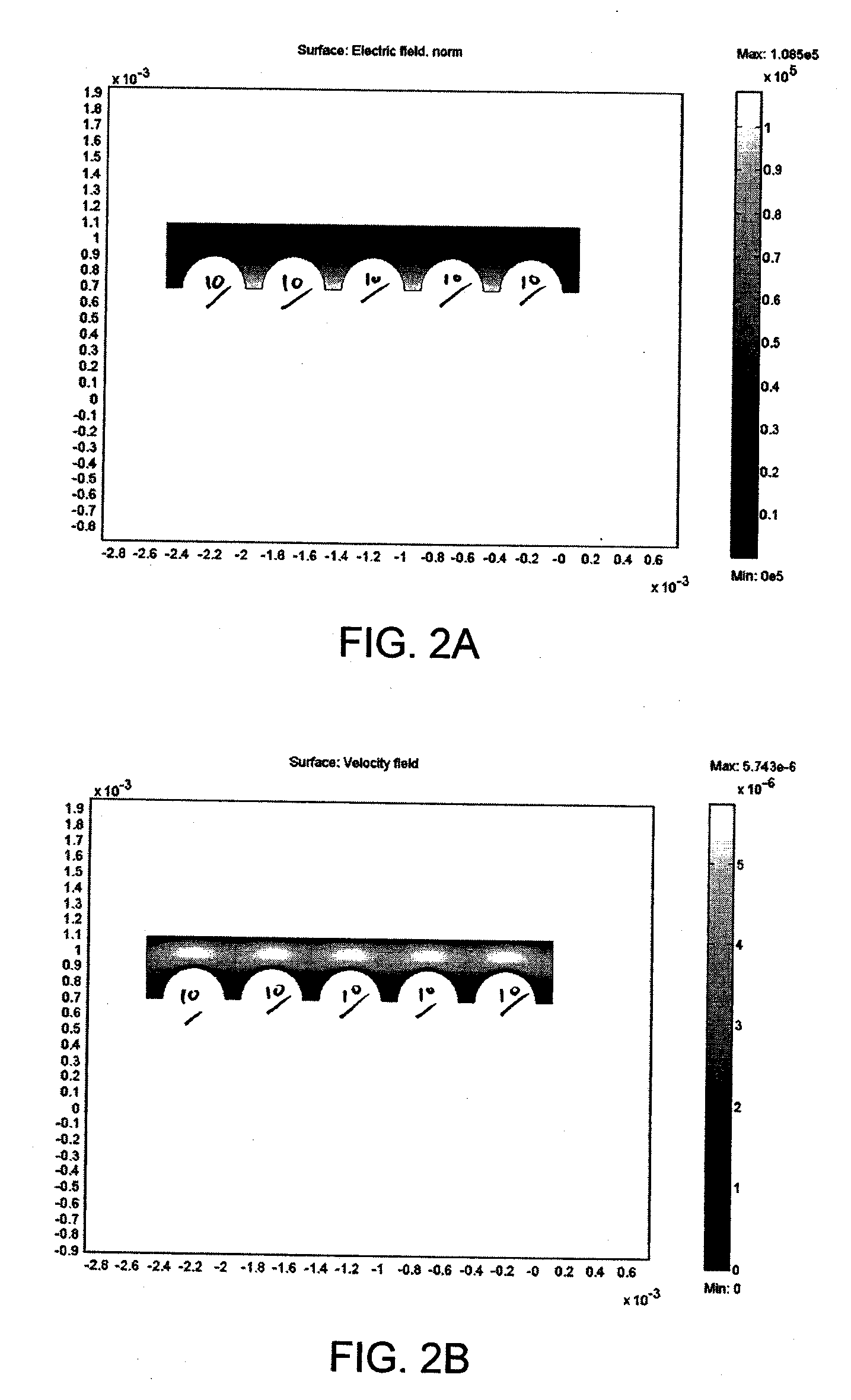Method and apparatus for dielectrophoretic separation
a dielectrophoretic and separation method technology, applied in the direction of liquid/fluent solid measurement, fluid pressure measurement, peptide, etc., can solve the problems of difficult fabrication process, limited operation of other devices, and high throughput separation device creation
- Summary
- Abstract
- Description
- Claims
- Application Information
AI Technical Summary
Benefits of technology
Problems solved by technology
Method used
Image
Examples
Embodiment Construction
[0030]FIG. 1A graphically illustrates the results of a computer simulation of the electric field present in de-ionized water (DI) in which two planar electrodes have been placed. The modeled electrodes had diameters of 50 μm and a center-to-center distance of 140 μm. A voltage of + / −30V was applied to the electrodes. As seen in FIG. 1A, the electric field generated by the electrodes is concentrated at or near the planar electrodes. The electric field is, however, relatively weak or low between the adjacent electrodes.
[0031] Although there has been some success in particle separation using planar electrodes, most designs have suffered from the problem of low throughput. The problem with traditional methods of using planar microelectrodes is that the DEP force, which is proportional to ∇|R|2, rapidly decays as the distance from the planar electrodes increases. This is one of the limitation that has prevented dielectrophoresis from being widely used in high volume applications. There ...
PUM
| Property | Measurement | Unit |
|---|---|---|
| Force | aaaaa | aaaaa |
| Flow rate | aaaaa | aaaaa |
| Electric potential / voltage | aaaaa | aaaaa |
Abstract
Description
Claims
Application Information
 Login to View More
Login to View More - R&D
- Intellectual Property
- Life Sciences
- Materials
- Tech Scout
- Unparalleled Data Quality
- Higher Quality Content
- 60% Fewer Hallucinations
Browse by: Latest US Patents, China's latest patents, Technical Efficacy Thesaurus, Application Domain, Technology Topic, Popular Technical Reports.
© 2025 PatSnap. All rights reserved.Legal|Privacy policy|Modern Slavery Act Transparency Statement|Sitemap|About US| Contact US: help@patsnap.com



